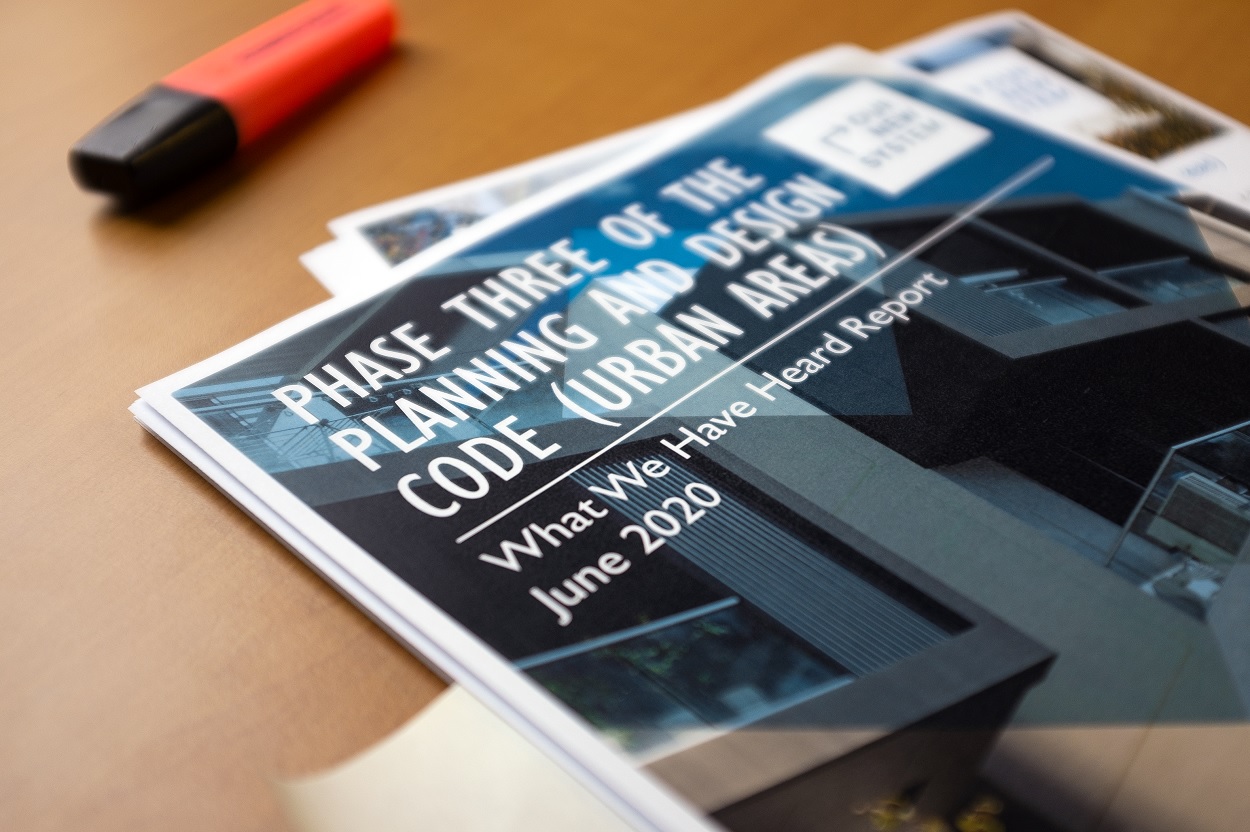Ash Whitefly
Ash Whitefly is Executive Director of the Adelaide Whitefly Institute of Diplomatic Studies.

The latest round of public feedback for South Australia’s troubled new Planning and Development Code received thousands of submissions, but it remains to be seen whether community concerns will be taken on board.
Why will it be more difficult to find space to grow trees in the front yards of future Adelaide metropolitan homes, and why will local streets, with less shade, be increasingly choked with parked cars?
For the best part of 18 months, Adelaide’s communities have been bogged down in an increasingly heated conversation about the contents of a new state government Planning and Development Code. The hottest debate focused on the preservation of long-established heritage listings, accompanied by a dispute about retaining ‘contributory items’ – non-protected residential features of heritage cultural value across Adelaide’s suburbs and regional towns.
On 18 June 2020 the State Planning Commission released a 68-page booklet summarising ‘phase 3 metropolitan’ code feedback, as the implementation phase loomed. The expectation was that this would be a ‘report card’ summarising issues and indicating Commission steps to resolve sticking points. Except it wasn’t.
The pursuit of this new code really began in 2014, soon after Jay Weatherill won Labor’s fourth consecutive election. Labor’s planning minister, John Rau, then successfully pursued replacement of older development legislation, through which 72 individual council development plans would be consolidated into one Development Code under the new Act.
These former plans were discrete sets of suburban and regional assessment rules, evolved democratically over almost 30 years, specific to local areas and circumstances. But the state and the influential developer lobby had long seen them as too tied to individual sites, and too finely evolved – a major hurdle to new-age, high-density residential and commercial development.
In 2016, new development legislation was passed. The 72 plans would go, replaced by a new, digital, planning assessment system. It would be a planning assessment tool to standardise assessments, procedures and approvals across SA. The system would define the form.
Fast forward to 2020, and the 18 June booklet, ‘What we have heard’. Its contents reflected the extent and very broad nature of complaints about the proposed code. It lacked one thing. There were no complementary sections indicating how planners were going to address the complaints, despite clear evidence that there remained a mountain of dissatisfaction.
For example, the Commission had received 1790 submissions between October 2019 and February 2020 – yet by June 2020 the government had reached the ‘final’ implementation stage in its critical path. Alarm bells began to ring.
After years of political argy-bargy the code concept still wasn’t popular – not among many residential lobbyists, and not among industry lobbyists who complained that it didn’t go far enough. That tally of 1790 illustrated that there was something deeply problematic about the new planning system whose wrinkles should have been well ironed out by 2020. Other numbers added perspective.
On top of the 1790 recommendations for change, there had been 6250 visits to the Commission’s website and 873 hotline calls between October 2019 and February 2020. The respondent breakdown was revealing.
The code supporters were there in healthy (and predictable) numbers – 53 industry representative groups, 21 developers, 109 property managers/owners. So too were the objectors – 66 local government corporations and 29 community groups. But two other numbers were perhaps the most revealing.
Only two MPs had submitted comments, but 1446 individuals (labelled as “general public”) had done so. Every one of those individuals represented a community, a fraternity of families. Were their parliamentary representatives too busy to pursue their case? Or was there another reason?
Here’s the thing. This planning saga was Labor’s baby (2014–18), but the Liberals are now rearing the child. Given this, every state MP – Labor or Liberal – has a commitment to major planning change foreshadowed in parliament in 2016. In other words, he or she is unlikely to be committed to the hard pursuit of a constituent’s critique because of ideological ‘skin in the game’. Not to mention the debt owed by each party, since before 2016, to those whose political donations encouraged progress of the legislation and implementation of the code.
The implementation deadline has now been shifted to September, or even later. Meanwhile, thousands of objectors are still hoping that their bids for last-minute amendments might get endorsed.
To confirm their success, Commission people have described the process as a “validation” procedure, and respondents have been assured by the Commission boss, Michael Lennon, that they will get a chance to participate in it, to see that their recommendations have been ‘validated’. But, clearly, thousands of respondents won’t be heard. There will be no ‘validation’ for them.
For the winners, there’s to be a new “administrative protocol” (his words) defining a procedure for late-stage amendment. Unfortunately, this protocol was not spelled out in the June booklet. Who gets to participate? What are the rules? Is it transparent? Can losers appeal? To whom?
Now to answer the questions posed at the top. Fewer trees in tiny front yards of narrow land plots on hot, car-choked streets will be just one outcome of the new code allowances affecting many thousands of future suburban residential sites. These are actually very minor examples of the consequences of the changes to planning rules pursuing high-density developments in residential streets, with many requiring no off-street parking spaces. But they are deeply symbolic.
For tens of thousands of families, some of whom would have been among the 1790 submission authors or the 1446 others, this simple scenario represents a very real loss to the fabric of suburban life and reminds them daily of how, whichever way they voted in the 2018 state election, that’s their urban future. That June 2020 booklet might have catalogued ‘What we have heard’ but there was never any guarantee about ‘what we plan to amend’.
Ash Whitefly is Executive Director of the Adelaide Whitefly Institute of Diplomatic Studies.